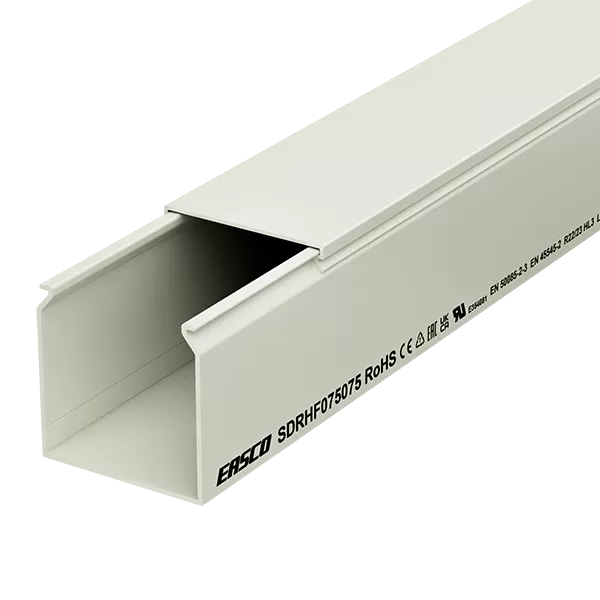Wiring ducts, also known as cable ducts or raceways. The material of wiring ducts is generally PVC plastic, which has insulating and flame-retardant properties. The purpose of using wiring ducts is to facilitate the wiring of electrical cabinets, making distribution cabinets look neat and aesthetically pleasing, while providing mechanical and electrical protection for the wires. The wiring method of distribution cabinets has significantly changed since the advent of wiring ducts. In the era before wiring ducts, electrical components were installed by drilling holes in the distribution panel, and wires and cables were generally hard wires. At that time, the skill of a wiring technician was most tested, as each hard wire had to be bent, and the wiring had to be horizontally and vertically aligned. Since the introduction of wiring ducts, distribution panels have gradually stopped using hard wire for wiring. Instead, multi-core flexible wires are generally used, and wiring no longer requires intricate shaping. It only needs to be simply guided into the wiring duct, and once the entire distribution panel is connected, the duct cover can be closed. This operation is simple and quick, requiring no professional skills, and it makes the distribution cabinet look clean and aesthetically pleasing.
The earliest standard for wiring ducts was Germany’s DIN VDE 0604 (Part 1). Later, China also developed a corresponding mechanical industry standard: JB/T9660-1999. This standard specifies the general requirements, test methods, inspection rules, and conditions for packaging, transportation, and storage of wiring ducts. Now, let’s take a look at the selection of electric wire duct.

The standard recommended colors are light gray, black, blue, or white. However, in the actual market, the colors of wiring ducts are mainly gray and blue. Green wiring ducts are relatively rare, and white wiring ducts are also uncommon.
Common cable duct types include open wiring ducts and closed wiring ducts. Open wiring ducts are more convenient for wiring, while closed wiring ducts are slightly more troublesome as the wires need to be threaded through holes. However, if there are many wires, it is easier to cover the duct at the end because all the wires are confined by the threading holes, preventing them from scattering.
In actual use, we generally need to cut long wiring ducts to appropriate lengths, which requires a special duct cutter. Sometimes, the wiring ducts around the edges are made to be joined at a 45-degree angle, which requires a duct cutter that can cut at angles. If the duct cutter has an angle adjustment mechanism, it can cut wiring ducts at any angle.
To choose a good wiring duct, you can repeatedly bend the teeth of the duct by hand. If it does not break easily, it indicates better quality. Additionally, check if the duct is straight, if the teeth are neat, if the duct cover fits securely with the duct, and if there are any burrs inside or outside.
